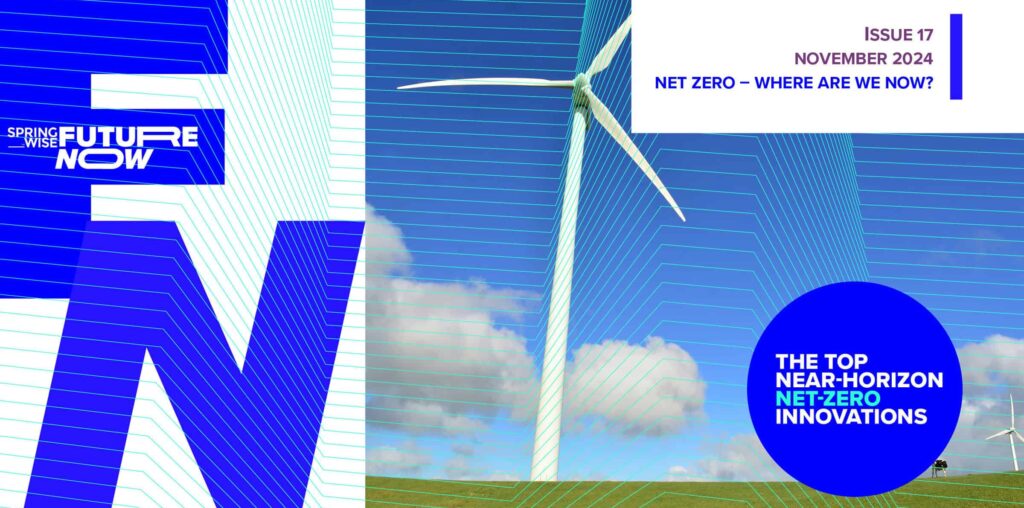A walkout by island nations and a climate finance deal branded “abysmally poor” by India’s representative. This year’s COP29 climate summit in Baku, Azerbaijan, did not end on an overly optimistic note. Although the delegates managed to avoid the dreaded ‘no deal’ scenario and reached an important agreement on global carbon markets, the consensus reaction was that the outcomes of COP29 fell short of the required urgency.
As the gavel comes down on the latest iteration of the world’s landmark climate summit, now is a good time to consider the status of the target to reach net zero emissions by 2050 – a goal that is key to limiting global warming to 1.5 degrees Celsius, as set out in the Paris Agreement.
Where are we now?
On the level of target-setting, there is some good news. According to Climate Action Tracker, as of this month, 145 countries have announced or are considering net zero targets, covering just shy of 90 per cent of global greenhouse gas emissions. Similarly, in the corporate world, 65 per cent of the annual revenue of the 2,000 largest global companies is covered by a net zero target.
But is aspiration leading to action on the necessary scale? Sadly, the answer is no. According to the United Nations, by 2030, global greenhouse gas emissions are projected to decrease by just 2.6 per cent compared to 2019 levels, based on today’s national action plans. For the world to be on track to limit warming to 1.5 degrees, it would need to fall by 43 per cent in that same timeframe.
There are some green shoots of hope, however. Solar panel prices have fallen by around 20 per cent every time global capacity has doubled. And according to the International Energy Agency (IEA), global renewable energy capacity is expected to grow by 2.7 times by 2030.
Innovation’s role in reaching net zero
Despite this, there is a clear need to ramp up action, particularly in the key areas of power, transport, the built environment, and heavy industry. In some of these areas, such as power, we have proven technologies, and the onus of innovation needs to be on facilitating solutions that ensure we have the infrastructure in place to achieve scale. In others, such as heavy industry and some aspects of transport, we need innovation at a more fundamental level. In this issue, we’ll go through some of the issues and bottlenecks in each of these areas, before highlighting a selection of the exciting solutions in our library that could help to paint a more positive picture in the future.
Power
According to the UK’s Climate Change Committee, “a decarbonised power system is the central requirement for achieving Net Zero in the UK and the prize for all modern economies.” Similarly, tripling global installed renewables capacity by 2030 provides the largest emissions reductions to 2030 in the IEA’s net zero scenario. The agency’s projections suggest we are currently running just short of this goal.
One of the key issues in the power sector is the lack of growth in renewable generation in the developing world due to issues of access to affordable finance – one of the reasons why climate finance is such a major issue at the COP summits. Another is the need for all countries to expand infrastructure as efforts to electrify previously fossil-powered applications increases overall demand. There is also a need to ramp up energy storage to balance the supply and demand of variable solar and wind power. According to the IEA: “The hugely increased need for electricity system flexibility requires massive growth of battery energy storage and demand response.”
The innovations

Photo source: © ABBPhoto from Getty Images
Stabilising grids by managing demand and aggregating battery storage
As the cliché goes, ‘the sun doesn’t always shine and the wind doesn’t always blow.’ This creates a challenge for the grid as solar and wind assets replace fossil fuel power plants. Imbalances between power supply and demand can threaten grid stability on the one hand, and cause wasteful energy curtailment on the other. Fortunately, we have tools to overcome this problem in the form of batteries and demand response (where large electricity consumers adjust their usage to balance the power grid). For these solutions to be effective however, all those battery units and pieces of industrial machinery need to be able to intelligently connect to energy flexibility markets – specialist markets set up to incentivise changes in supply or demand. This is the focus of Dutch company Sympower. Through non-intrusive, AI-powered software, the startup connects industrial power consumers and battery owners with these flexibility markets, enabling them to earn extra revenue from the ‘services’ they provide to the grid. For industrial companies with machinery that can be ramped up or down, this means optimising their consumption to avoid times of peak demand. For battery owners, this means charging or discharging their batteries to coincide with the grid’s needs. Sympower receives revenue from national transmission system operators, which in then shares with its clients. Find out more
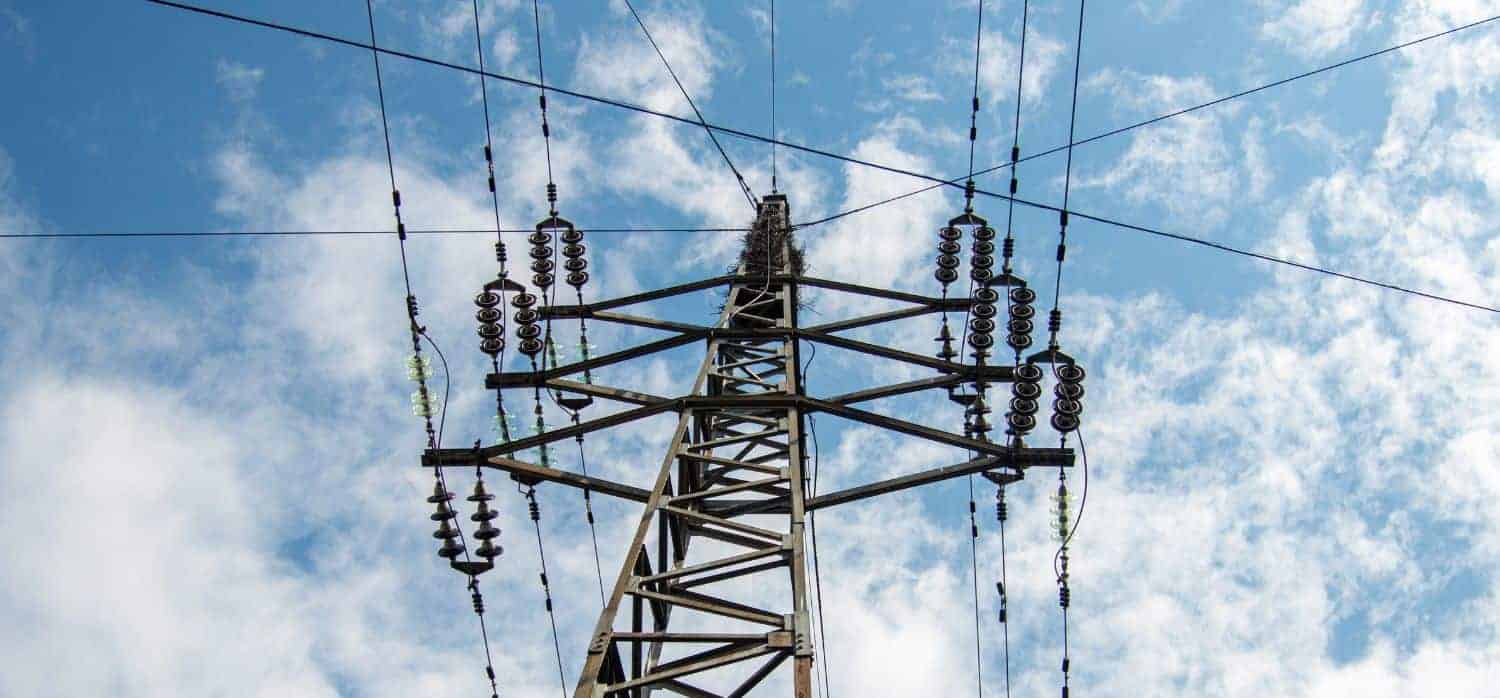
Photo source: © authorstock007 from Getty Images via Canva.com
Cooling power lines for an efficient grid
As electricity is transported through overhead lines, the cables can quickly warm up. Not only can this make them less efficient, but it also poses a safety risk: when the lines warm, they sag, which can cause them to droop into the treeline and spark fires. This issue of overheating is only growing as electricity demand rises and the climate warms, triggering more power line fires and electricity blackouts. To combat this, AssetCool has developed an innovative photonic coating that keeps lines cool. Using passive radiative cooling, the coating reflects solar radiation and allows infrared heat generated by conductors to escape more easily. In getting rid of excess heat and preventing more from entering power lines, the coating helps to minimise electrical resistance, reducing power losses and associated CO2 emissions. This would enable existing lines to meet additional electricity demand, instead of more expensive infrastructure being required. Read more
Transport
According to the IEA, transport accounts for almost one-third of CO2 emissions from end-use sectors. It is therefore an important sector for achieving overall net-zero goals. In passenger road transport there is some good news, as the share of electric cars in total sales increased from around 4 per cent in 2020 to 18 per cent in 2023. This momentum is expected to continue throughout 2024. To facilitate this roll-out, innovators are focused on optimising battery systems and charging networks.
In heavy-duty trucking, maritime shipping, and aviation the picture is more complex as zero-emission power sources are less well-developed. Electrification is less well-suited to these applications (though not completely impossible), so much of the short-term focus has been on improving energy efficiency. Battery electric and fuel-cell vehicles account for less than 2 per cent of new medium and heavy duty truck sales in the US and EU, and although there has been some investment in drop-in fuels in aviation and shipping, these sectors remain overwhelmingly dependent on fossil fuels. There is therefore a clear division between ‘interim’ solutions and more fundamental changes in energy source, such as ammonia for trucking and shipping and hydrogen and sustainable aviation fuel for aviation – both of which only exist on a small scale today.
The innovations

Photo source: Beyond Aero
A hydrogen-electric business aircraft
One startup that is working to develop a whole new aviation power source, albeit for smaller aircraft, is Toulouse-based Beyond Aero. The company is developing a hydrogen-powered business aircraft that is designed to carry 6 to 8 passengers up to 1,500 kilometres. The plane stores gaseous hydrogen in tanks that are carefully located and integrated to optimise space without compromising on efficiency. In fact, the company claims that its patented tank integration is up to 30 per cent more aerodynamically efficient than a comparable retrofit configuration. The hydrogen then feeds a fuel cell powertrain that gives the aircraft a range that is up to 7 times higher than a plane powered by lithium-ion batteries alone. An advanced thermal management system optimises temperature control for the fuel cells with a minimal impact on aerodynamic performance. The company conducted its first test flight in February 2024 using an under-sized prototype powertrain. Beyond Aero’s smaller planes will have an initial target market of celebrities and high net-worth individuals, but the company is already thinking longer-term about the infrastructure needed for hydrogen aviation. It has formed strategic partnerships with more than 50 global airports to facilitate the roll-out of hydrogen re-fuelling infrastructure. The use of gaseous, rather than liquid, hydrogen storage makes these upgrades easier for airports. Find out more
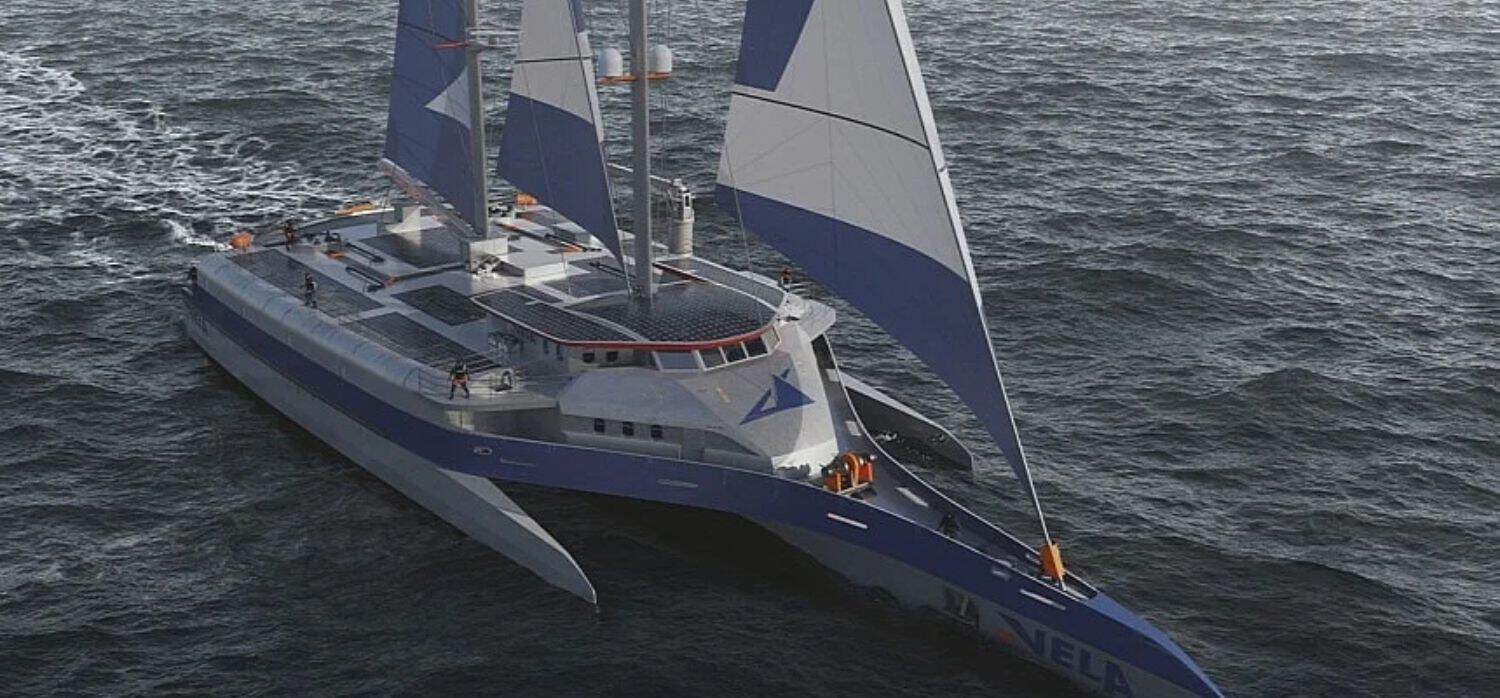
Photo source Vela
Modern wind power for maritime cargo
Occasionally, innovation has an air of back to the future about it, as is the case with Vela, a startup designing and building the world’s largest sailing cargo trimarans. The vessels, nicknamed L’avions des Mers (‘The Sea Planes’), will offer wind-powered transatlantic crossings in less than 15 days, allowing shippers to achieve even faster timelines and at a fraction of the carbon cost. Each ship will carry the equivalent of 51 containers of cargo, most of which will be stored on the upper deck, streamlining loading and unloading operations. The vessels will also store goods on pallets instead of containers, minimising weight and keeping costs low for shippers. Unlike large container ships, the Vela vessels are designed to access strategically situated, smaller harbours. This will allow loading and unloading closer to manufacturing centres, reducing costs and CO2 emissions from first- and last-mile operations in supply chains. Plus, the trimaran’s holds will also be maintained at a controlled temperature and humidity so that products like pharmaceuticals can be transported. Read more

Photo source: © SevenStorm JUHASZIMRUS from Pexels via Canva.com
Mapping the sky to prevent planet-warming contrails
The white streaks that aircraft leave in the sky, known as contrails, account for almost 60 per cent of aviation’s climate impact. But up until recently, contrail prevention was deemed either too difficult or impossible. Now, however, Cambridge-based Satavia has created a technology that enables airlines to create flight plans that minimise contrail formation. Using data analytics and AI, Satavia has developed a weather prediction model that can forecast the conditions that lead to the formation of contrails. The company’s tech platform, DECISIONX, harnesses and combines multiple environmental, weather, and aircraft data to provide insights into local conditions in the atmosphere anywhere, anytime. This system builds on Satavia’s 5-DX software, which acts as a ‘digital twin’ of the the earth’s atmosphere from surface to space. The insights from DECISIONX enable flight planners to make decisions to minimise climate impact. For example, they may modify a flight’s altitude or route to avoid flying through parts of the atmosphere that the technology indicates are prone to contrail formation. These changes need not be dramatic, as a lot of contrail damage can be prevented by even the slightest variations in a flight path. Read more
Built environment
The world’s buildings and structures, known collectively as the built environment, are responsible for almost 40 per cent of global energy and process-related CO2 emissions. And, according to the World Business Council for Sustainable Development (WBCSD), we must halve emissions from the built environment by 2030, before decarbonising it fully by 2050.
Part of the challenge comes from the emissions associated with building materials, known sometimes as ‘embodied carbon.’ However, according to McKinsey, only 24 per cent of the lifecycle emissions of a typical building come from the processing of raw materials for construction, with 76 per cent coming from building operations. the primary sources driving these operational emissions are heating and cooling. Innovators are working to address both challenges and solutions cover retrofits as well as new builds – something that is crucial given that more than 85 per cent of today’s buildings will still be standing in 2050.
The innovations

Photo source: © Mike Marchetti from baseimage
‘Passports’ for buildings and construction materials
According to official government statistics, construction, demolition, and excavation generated roughly three-fifths of the UK’s total waste in 2020. To make a dent in these statistics, startup CircuLand is hoping to facilitate the reuse of construction materials, thereby reducing emissions from the processing of new raw materials. The company is doing so through the use of materials passports – digital documents that certify the identity and properties of different construction materials, providing customers with the confidence to reuse them. Information about a product is added at each of the different stages in its lifecycle. Manufacturers upload information on its properties, sourcing, circularity, and carbon performance before contractors add information on design and on-site construction. Facility managers then provide data on repairs and maintenance, and demolition contractors document the product’s recovery at end-of-life. CircuLand’s passports can be applied to individual materials or whole buildings. Together they create a database of the material stock for the entire UK, and CircuLand also offers a marketplace for connecting supply and demand for re-used materials. Find out more
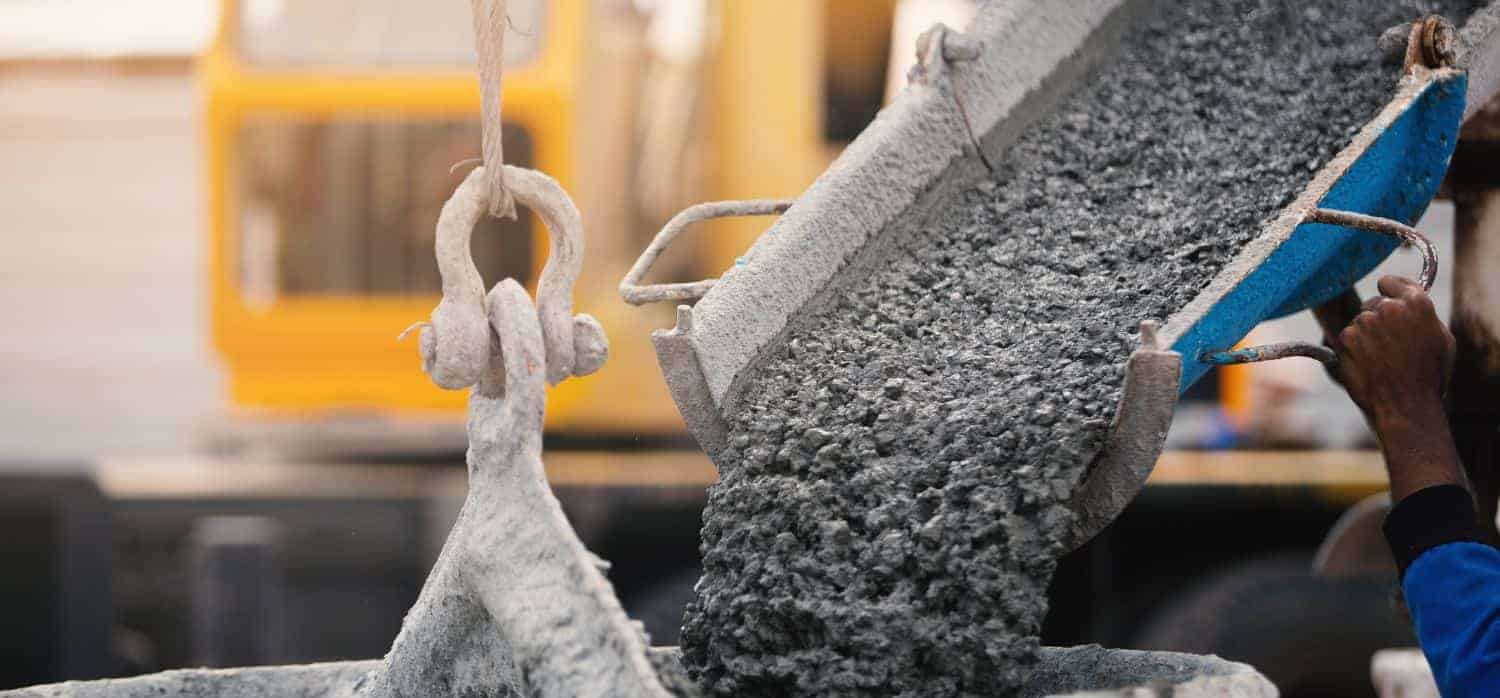
Photo source © Kasipat Phonlamai / EyeEm from Getty Images via Canva.com
Could we turn rubble into circular cement?
Concrete is a staple of the modern built environment, with the UK producing 21 million metric tonnes of the ready-mixed material in 2022 alone. But our mass production of concrete comes at a huge carbon cost, mainly due to one key component: cement. Cambridge Electric Cement (CEC) may have developed a solution that could change this, however. The Cambridge University spinout has found a way to transform old concrete from demolition sites into a circular cement, using electric arc furnaces that currently process recycled steel. The final product acts as a direct replacement for Portland cement in new mixtures. First, the company crushes the concrete to retrieve the old cement powder, which is used instead of lime-flux within the furnace. This flux forms a slag, which floats on top of the steel as it melts. The liquid steel is tapped off and once the slag meets the air and cools, it solidifies and is ground up into a powder to create a near-identical replacement for Portland clinker. Then, the clinker can be blended into cement and used in new construction projects. Read more
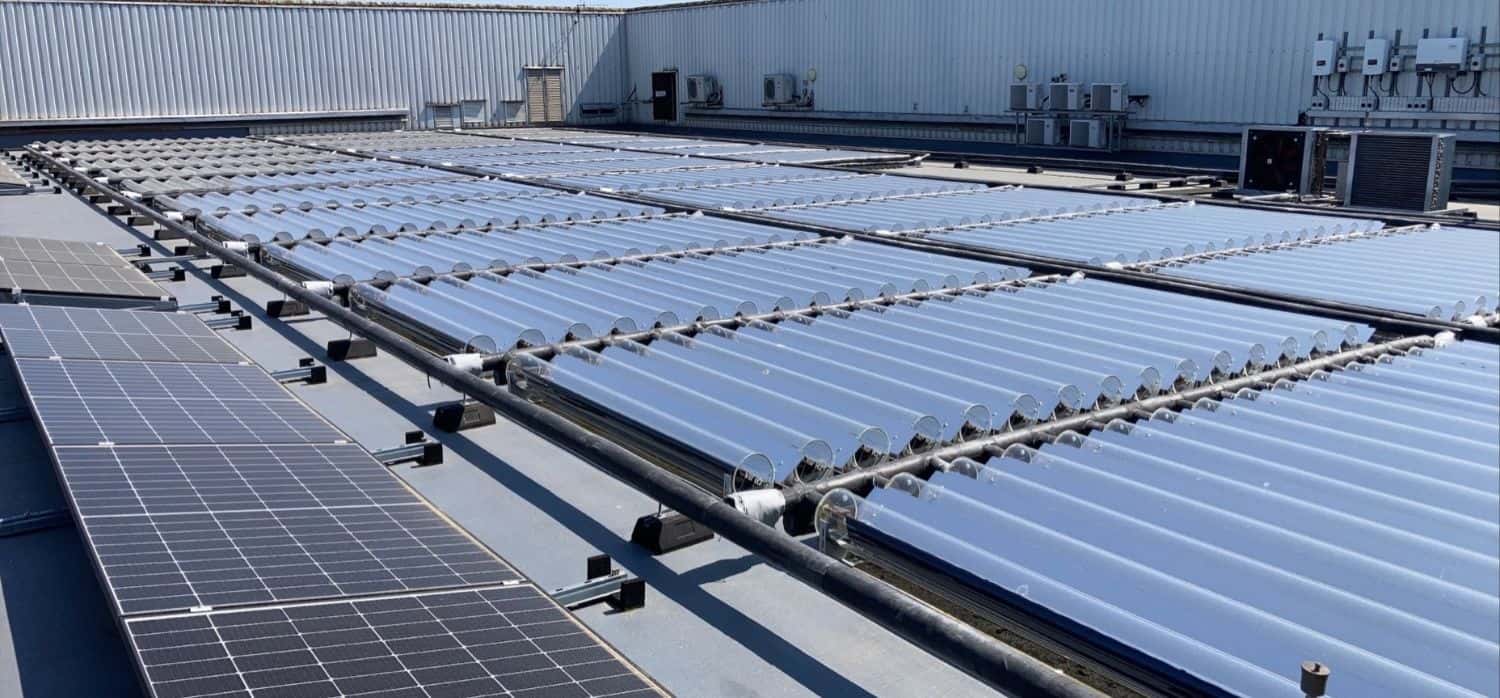
Photo source: Naked Energy
Hybrid solar systems provide both heat and power
According to the International Energy Agency, space and water heating accounts for almost half of global energy use in buildings. A lot of the talk when it comes to decarbonising heat focuses on heat pumps, particularly in the residential sector. However, there are other complementary technologies that have an important role to play. Solar energy, for example, is typically associated with electricity generation, but the power of the sun can also be used to provide heat directly. Naked Energy has developed unique on-site solar technology that can supplement heat pumps and provide buildings with both heat and power. The company has two products under the brand name Virtu. VirtuHOT generates pure heat up to 120 degrees Celsius. VirtuPVT, meanwhile, is photovoltaic thermal product that combines very high-efficiency photovoltaic cells with the startup’s unique heat transfer absorber. Both products are efficient, very quick to install, and very low profile – rising only 26 centimetres off the roof line when installed on a flat roof. The company has just completed the UK’s largest-ever solar thermal project on the British Library in London. Read more
Heavy industry
Chemicals, steel, and cement. These three industries play a crucial role in our daily lives, yet they require vast amounts of energy. In fact, their energy requirements are roughly equivalent to the total primary energy demand of the United States, according to the IEA. All three also continue to grow rapidly – demand for cement and steel has more than doubled, while the production of plastics has increased by over 90 per cent since the start of the millennium.
‘Heavy’ industries like these face two specific challenges when it comes to decarbonisation. First, they typically require extremely high process temperatures, which are impractical to achieve with renewable electricity. Second, they often produce emissions directly as a by-product of the desired chemical reaction. Many of the solutions this area are at the demonstrator or prototype scale, yet innovators are tackling this hardest of hard-to-abate sectors.
The innovations
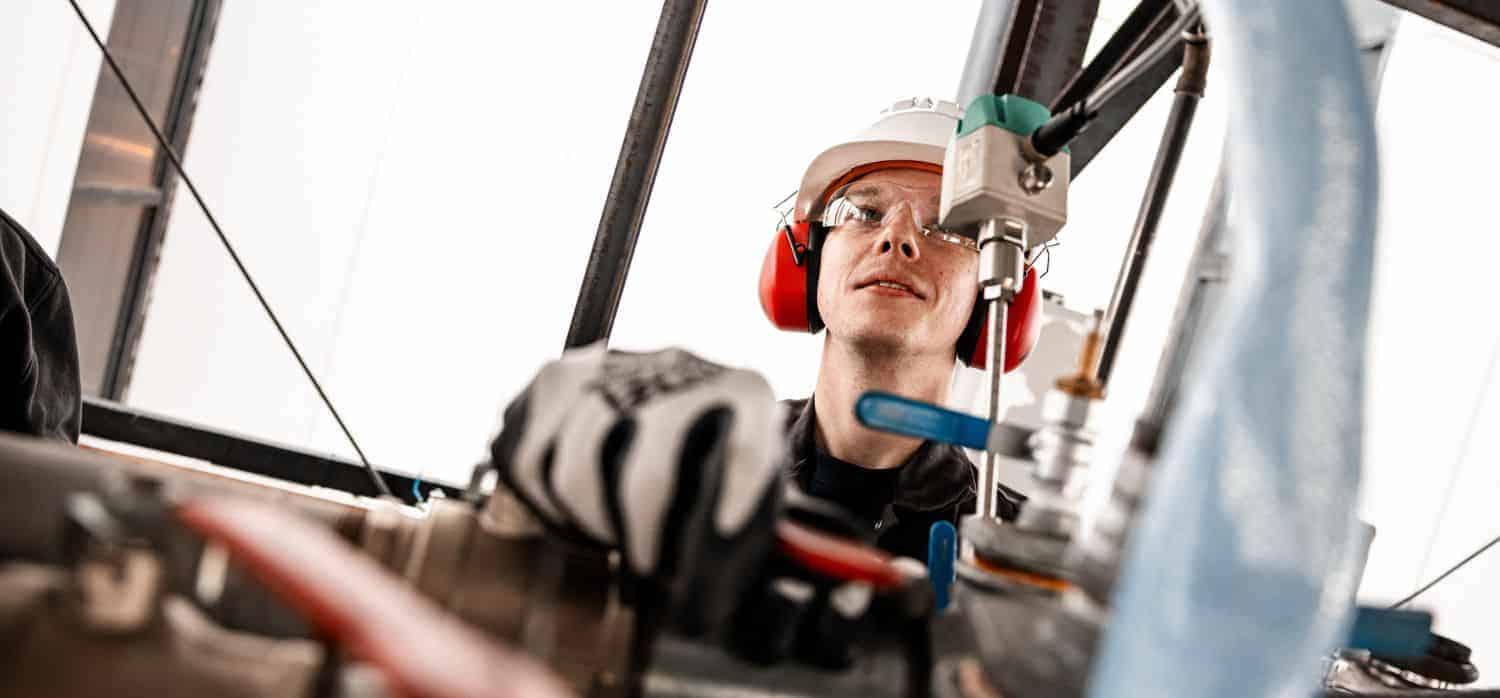
Photo source: Krols Media
Zero-emission iron fuel for clean heat
Dutch company RIFT is exploring an unexpected carbon-free fuel source for industrial heat: iron powder. The startup’s technology harnesses iron’s ability to burn without emitting carbon dioxide. Iron powder is burned in a boiler to generate heat, and, as it combusts, it leaves behind rust. In a circular twist, the rust is then re-converted back into iron using hydrogen, making the process sustainable and repeatable. This method not only allows for high-efficiency heat production but also offers grid-independent energy storage, as iron powder can be easily stored and transported, unlike some other clean energy carriers. Currently in the proof-of-concept stage, the technology has two operational plants in the Netherlands. With the help of recent funding from investors including Invest-NL and PGGM, the company plans to complete final operational tests and scale toward a commercial pilot project in the coming years. Read more

Photo source: © Chris_LeBoutillier from pixabay via Canva.com
Converting industrial waste heat into power
Industries such as cement and steel production produce vast amounts of waste heat. Although there are already technologies such as turbines that convert this heat to electricity, these moving technologies are considered too risky to be implemented in complex industrial environments. Now, Advanced Thermovoltaic Systems (ATS) has created a low-risk, efficient alternative. Initially investigating advanced materials for solar power, the ATS team realised that its panels could generate electricity without light, only requiring waste ambient heat. The innovative technology captures this waste thermal energy and safely converts it into electricity. There are no moving parts or hazardous chemicals, making ATS’s solution less risky than turbines or other industrial options that are currently available. The electricity produced can be fed back into a facility’s system, boosting the energy efficiency of industrial operations and minimising its reliance on fossil fuels. Read more
As a member, you have unlimited access to our library of over 14,000 innovation case studies. If this feature has piqued your interest, why not have a deeper dive into biodiversity today?
